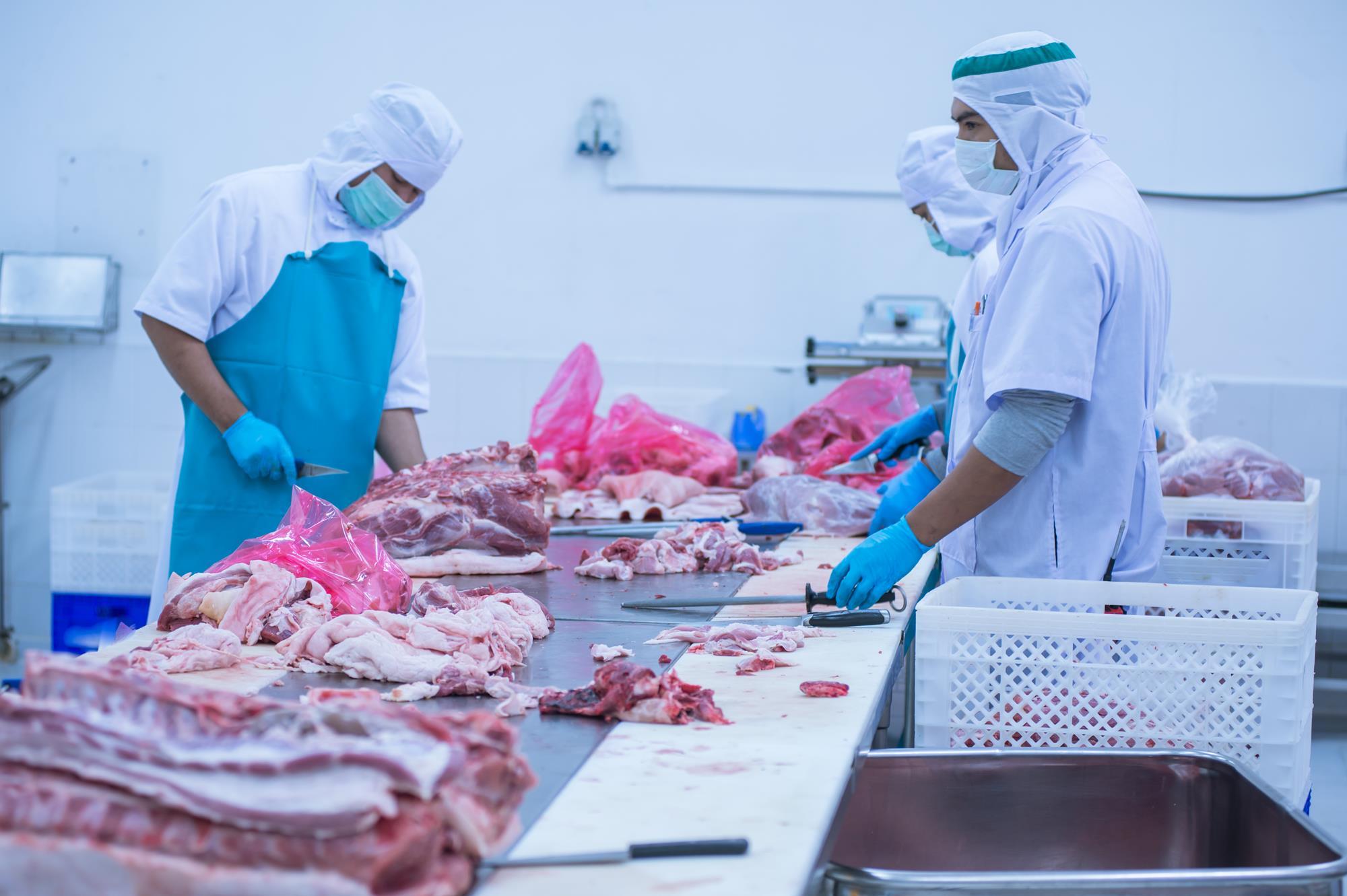Investigating the Surge of Online Fresh Meat Sales in Ireland

The Irish food landscape is undergoing a transformation. While sustainability concerns increasingly influence consumer purchasing decisions, the online meat market is poised for significant growth. This report goes into the intersection of these trends, examining the unique challenges and opportunities within the Irish context.
The Evolving Consumer Landscape
Sustainability Takes Center Stage
Almost 60% of Irish households prioritise sustainability as much as price when buying protein. This shift coincides with predictions that the online meat market will reach 5.6 billion in the next decade.
Ireland’s Farming Heritage Meets Modern Demands
Ireland’s long history of farming, renowned for grass-fed cattle, is adapting to meet the needs of contemporary consumers. Shoppers are increasingly seeking traceable supply chains and environmentally conscious packaging.
Bridging the Gap with Digital Platforms
Digital platforms offer farm-to-table transparency, attracting health-conscious consumers. This increased transparency fosters confidence and builds brand loyalty.
Navigating Challenges and Embracing Opportunities
Irish import restrictions and stringent EU food safety regulations present difficulties for merchants. These regulations serve as quality identifiers, leveraged by astute businesses to demonstrate commitment to ethical farming practices and meet growing expectations.
Key Takeaways
- Consumer interests are changing, driving the rise of online meat sales globally.
- Ecological characteristics are increasingly prioritized by Irish purchasers over price alone.
- Digital channels provide picky consumers with more information about the supply chain.
- Efforts to ensure the safety of food produce both obstacles and possibilities for advertising.
- Conventional agricultural practices evolve to address contemporary environmental issues.
An Analysis of the Irish Online Meat Market
Cultural Attachment to Quality Protein Sources
78% of locally produced meat stays within the country, reflecting a strong cultural connection to domestic products.
Grass-Fed Tradition
90% of cattle ranches utilize a grass-fed approach, reinforcing Ireland’s reputation for quality beef.
The Fresh Meat Industry: A High-Level Review
Grass-Fed Beef: A Premium Offering
Irish farmers prioritize grass-fed beef for its unique flavor qualities. Stringent EU import regulations protect local growers in a market where 63% of buyers actively seek verifiable cuts.
Rising Popularity of Plant-Based Alternatives
12% of protein sales among those under the age of 35 come from plant-based alternatives, indicating a growing awareness of alternative protein sources.
Consequences for Traditional Retail Strategies
Pressure on Butchers and Farmers
Younger generations prioritize ease of purchase. Traditional butchers face pressure from producers seeking more equitable profit distribution.
Direct Sales Empower Farmers
Farmers can retain up to 45% of the final price through direct sales on digital platforms, compared to traditional methods. Traditional stores respond by offering click-and-collect options and meat bundles with recipes.
Evolving Customer Expectations
Shoppers evaluate in-store and online offerings based on quality guarantees and versatile delivery alternatives. Forward-thinking stores combine sustainability certifications with real-time inventory tracking.
The New Era of Online Fresh Meat Shopping
Convenience and Quality
Irish consumers can now access premium cuts as easily as streaming movies. This reflects broader global trends while retaining unique local traits.
Demographics of Online Meat Shoppers
68% of regular meat e-commerce customers are between 28 and 45 years old. These customers prioritize doorstep delivery over in-store browsing.
Changing Customer Preferences and Digital Uptake
Building Trust Online
Confidence-inspiring elements characterize successful platforms. High-resolution images showcase marbling and texture. Real-time tracking addresses the need for supply chain transparency. Farm-to-fork video material increased repeat orders by 40% for one provider based in Cork.
The Pandemic’s Impact
The pandemic accelerated adoption rates. 57% of Irish homes utilized meat delivery services for the first time during lockdowns. Two-thirds continued with these practices, valuing time savings and reduced food waste.
Subscription Models and Guarantees
Urban workers value customized offerings and appreciate the convenience of subscription models. Temperature-controlled packaging and satisfaction guarantees address consumer skepticism. An online retailer in Dublin stated, “Customers need to feel the digital experience matches – or exceeds – physical shop standards.”
Ethical Considerations Drive Loyalty
The availability of carbon-neutral delivery choices and traceable sourcing influences 74% of repeat purchases. This alignment of customer principles and business methods ensures continued participation in Ireland’s dynamic food market.
Consumer Preferences and Market Trends
Informed Consumers Seek Guarantees
Irish consumers approach product labels with the rigor of food experts, seeking guarantees beyond nutritional information. Environmental impact reports are now considered by 73% of supermarket shoppers.
Responsible and Environmentally Friendly Meat Production
Growth of Grass-Fed Beef Sales
Since 2021, sales of grass-fed beef have increased at a rate 28% higher than that of conventional beef. Products with proven ethical credentials command a premium of 15-20% from buyers. “Our heritage breed pork outsells normal slices three-to-one,” observes a producer from Meath.
Digital Platforms Enhance Transparency
Interactive maps showcase livestock grazing patterns. Certification badges provide information on welfare standards. Customers under the age of 40 account for 68% of the increase in sales of ethical meat.
How Regional Customs and Rules Affect Agriculture
EU Regulations Give Local Producers an Edge
EU food safety regulations give Irish manufacturers an advantage in the home market. The majority of supermarket lamb (82%), due to stringent import rules, comes from within 150km of where consumers can buy it.
Sustainable Practices as Marketing Tool
Rotational grazing keeps pastures healthy and provides marketing material for environmentally conscious consumers. Merchants utilize these techniques by telling stories, updating centuries-old tactics to make them more appealing to current consumers.
Balancing Strategy and Price Sensitivity
Farmers can offer competitive rates while keeping margins through direct sales approaches. A butcher from Kilkenny has seen a 40% increase in sales by combining online and offline strategies.
Regulatory and Operational Factors
Compliance and Logistics
Legal compliance and logistical execution must be executed with accuracy to navigate the Irish meat e-commerce business.
Rules for Regulation, Food Safety, and Labelling
Irish meat merchants follow over 200 EU food safety rules for production and online sales. 92% of successful operators perform quarterly third-party audits. HACCP certification is still required. A supplier from Galway describes documenting every step of the process as essential for maintaining customer confidence.
Challenges of Digital Labelling
Digital platforms face particular labelling challenges. All package information, from origin stamps to storage instructions, must match web listings. Verified certification numbers are required for certain claims, such as “grass-fed,” during checkout.
Managing and Organising the Cold Chain
Importance of Temperature Control
The ability to maintain constant temperature management is crucial for success. Commercial blast freezers (minimum temperature of -18°C) are used in conjunction with GPS-enabled monitors for real-time tracking. Insulated packing solutions cut claims for spoiling by 63%, although they increase costs by €2–5 per order.
Inventory and Pricing Management
Slaughter schedules and demand projections must be synchronized for inventory management purposes. Dynamic pricing algorithms are required due to variable cut weights making stock-keeping units more complicated. Most shops keep a 40% buffer stock during high seasons to account for processing delays.
Insurance and Record-Keeping
Insurance covers hazards ranging from refrigeration breakdowns to labelling problems and consumes 7-12% of margins. Careful record-keeping reduces claim processing times by 78% with the right paperwork.
Methods for Selling Meat Online
Building a Solid Web Foundation
Small producers with perishable commodities extensions handle 87% of Irish farm shop websites with Shopify. WooCommerce is a good fit for medium-sized businesses that require bespoke product configurators for variable-weight cuts. Magento and GrazeCart are two enterprise systems that help wholesalers with complex business-to-business transactions and compliance.
Essential Web Features
APIs for temperature-controlled delivery and real-time inventory sync with slaughterhouse outputs are being used these days. A beef supplier from Clare reported a 65% decrease in packaging errors using their subscription management system. Integrated certification displays increase confidence at checkout, as at least 72 percent of consumers look at welfare badges before making a purchase.
Fresh Advertising and Customer Involvement
Visits to websites with interactive content are 40% longer. Butchers broadcasting livestreams from grazing fields and preparation tutorials turn viewers into clients. Repeat sales increase by 33% with recipe pairings in email advertising. Loyalty programme rewards include free homemade sausages or a pass to a masterclass for referring friends. 28% of Dublin-based clients choose surprise-cut mystery boxes.
Targeted Marketing
Dynamic pricing algorithms provide for seasonal premium discounts without turning off repeat customers. Instagram videos featuring farm life get three times as many engagements compared to static postings. The conversion rate for Google Ads aimed at “grass-fed lamb delivery” is 19% greater than that of general meat terms.
Conclusion
Ireland’s Position in the Global Market
Ireland is at a crossroads where its agricultural history meets digital innovation. Irish farmers have a leg up in the competition, with the online meat market expected to reach $7.1 billion worldwide by 2034.
Balancing Tradition and Technology
Achieving success calls on being both traditional and adaptable to new technologies. Keeping in touch with customers on a human level is essential for retailers to succeed in cold chain logistics.
Appealing to Younger Consumers
This is an especially attractive combination for younger customers, as 68% of them say that when they’re shopping for protein, they want it to be convenient without sacrificing ethical standards.
Building Lasting Relationships
Relationships remain longer when producers put money into honest narrative and reliable delivery mechanisms. Marketing storylines rooted in Ireland’s farming heritage may reach audiences all over the world as the importance of sustainability grows.
The Future of Meat Sales
The combination of physical and digital elements will most certainly become the norm in the near future. Those who adopt this combination strategy while maintaining strict safety standards will spearhead the revolution in meat sales in Ireland.
A Call to Action
Live up to the standards set by your ancestors while shaping the grocery store of the future.
FAQ
How has online shopping affected the Irish beef market?
More options, lower prices, and more accessibility have resulted from the proliferation of meat e-commerce platforms. There is a lot of pressure on brick-and-mortar stores to shift their focus to digital services or specialty products like handcrafted cuts in order to survive.
What motivates Irish consumers shopping for meat online?
Transparency in farming operations, availability of specialist cuts, and time efficiency are key factors. Many buyers appreciate that trustworthy stores provide information about the products they sell, including where they came from and how to get them.
Is the Irish market for beef being affected by sustainability concerns?
The demand for products that are obtained ethically, such as grass-fed cattle and free-range chicken, has increased dramatically. Often, retailers can gain an advantage over their competitors by emphasising environmentally friendly packaging or carbon-neutral operations.
How do local farming practices influence online meat purchases?
Because of their faith in the quality standards, Irish consumers often choose domestically produced goods. Platforms that highlight their commitment to Bord Bia certifications or collaborations with local producers usually hit home.
What logistical problems could arise when shipping fresh beef to Ireland?
It is still very important to keep the cold chain intact while in transit. To guarantee food safety compliance, successful businesses invest in insulated packaging, real-time temperature monitoring, and partnerships with dependable couriers.
Which methods contribute to the success of online butcher shops?
Websites that are easy to use, content marketing based on recipes, and loyalty programmes are all good ways to attract customers. Enhancing customer retention include subscription models for recurring purchases and live chat support for order queries.
How crucial are labelling regulations when selling meat online?
We demand absolute compliance with all food labelling regulations in the European Union and Ireland. Consumer trust is fostered and legal penalties are avoided by the use of clear information on allergens, storage recommendations, and country-of-origin labelling.
